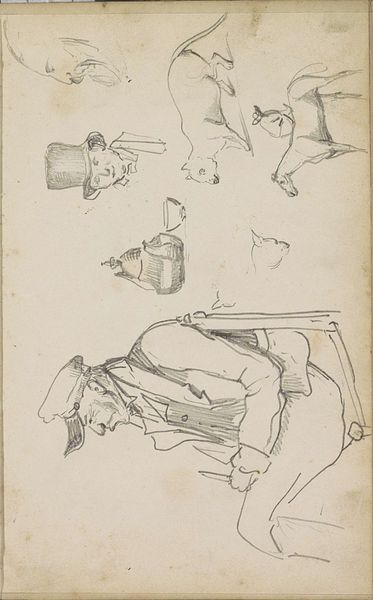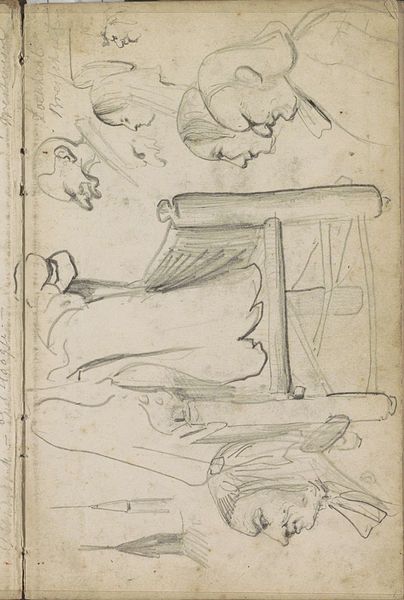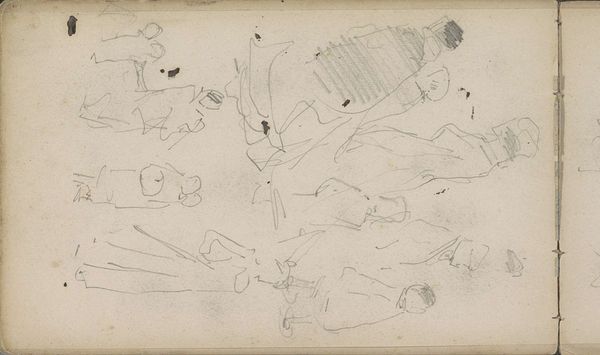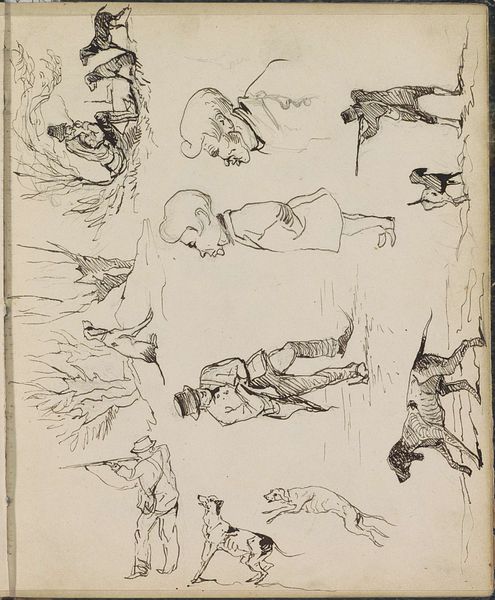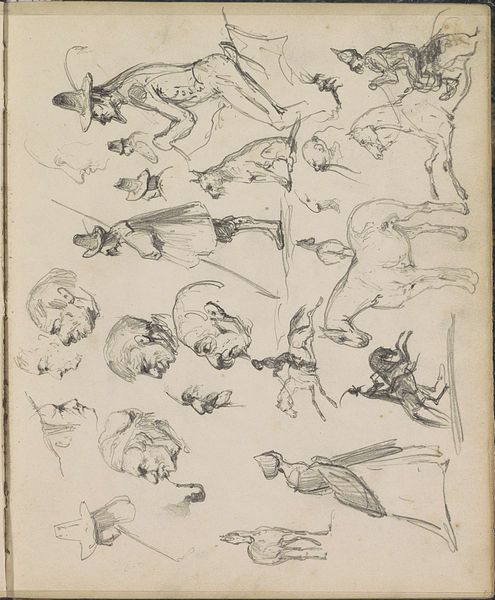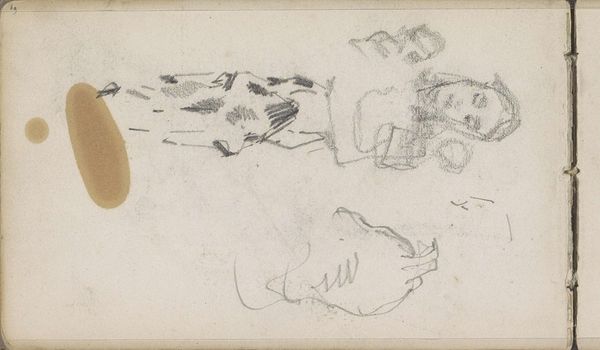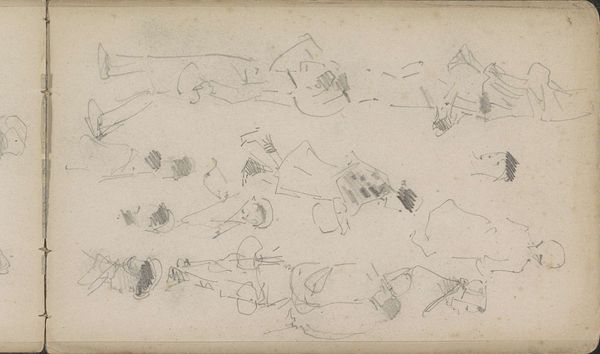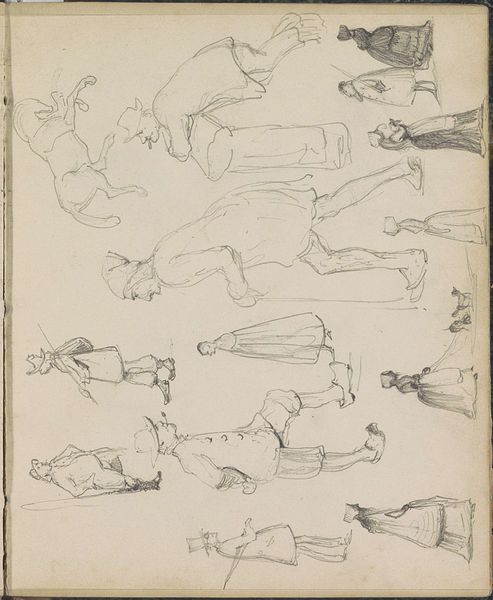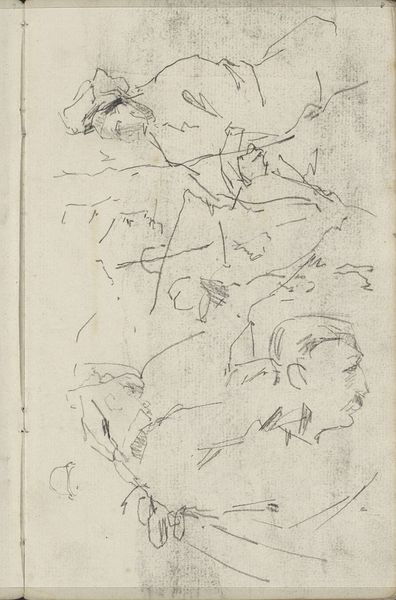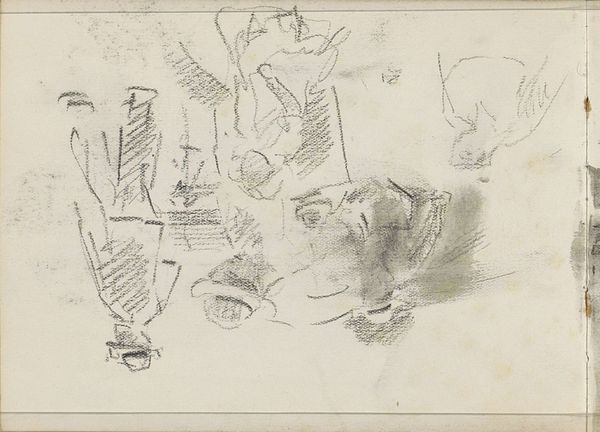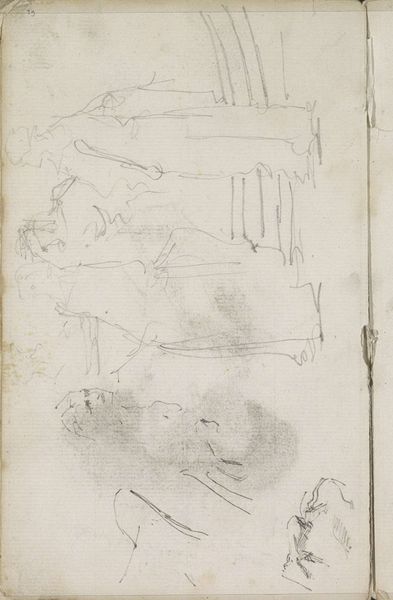
drawing, paper, pencil
#
drawing
#
landscape
#
figuration
#
paper
#
pencil
#
horse
Copyright: Rijks Museum: Open Domain
Curator: Looking at this quick study, I'm immediately drawn to the artist's choice of using very faint pencil marks, almost like fleeting thoughts captured on paper. Editor: Absolutely, a flurry of energy! Before diving into the specifics, this Johannes Tavenraat piece, “Paarden en vrouwen met kappen,” dating from 1839 to 1872, and housed at the Rijksmuseum, offers an insightful glimpse into the artist's creative process. What is interesting for me is how such everyday materials – paper and pencil – allows the labor to be seen so obviously. We witness the thinking process right there on the paper. Curator: I agree, and I want to jump into that – specifically the varied compositions of horse figures, next to women’s profiles and dresses; they convey a dynamic visual rhythm, which is balanced out by the almost empty ground on which they are drawn. It is this emptiness that makes the drawing not feel cluttered, but rather fresh and open. Editor: Right, a conversation is initiated with the white of the paper as if to say that there needs to be less material present on a working document of sorts like this. But what’s fascinating, is that these figures, seemingly unrelated, reveal aspects of 19th-century life. Horses of course are work animals but we have no direct context to infer what purpose each one plays. Instead, our experience tells us the labor in this case. We do see women wearing traditional head coverings; the whole page could serve as an almost anthropological study of his time. Curator: Agreed. I see them interacting in a symbolic context – that these representations do have a cultural exchange in their time but are not entirely clear to us. But these drawings feel remarkably accessible. Tavenraat captures details and relationships in an incredibly deft way, focusing the light onto key elements like the curve of a horse's back or the drape of a cap. Editor: True. These visual notes speak to the way art relies heavily on accessibility, to be relatable and that these images – horses, figures, clothings – create an opportunity for labor to come through and speak for themselves and the reality of how the material is present in our lives. The means of production might very well become the story themselves! Curator: Yes, and in that sense this drawing teaches us more than any painting might do, in its unvarnished presentation. It emphasizes an interpretation, in an active form, using a raw state of paper to be viewed not just in a formal appreciation of drawing style and composition, but in the state of process and labor, too. Editor: I appreciate that the combination of careful details along with a fast process creates something much more open for contemplation. A study of daily interactions. Curator: It gives me the feeling of entering a private diary—personal yet resonant with larger social themes that feel timeless.
Comments
No comments
Be the first to comment and join the conversation on the ultimate creative platform.
